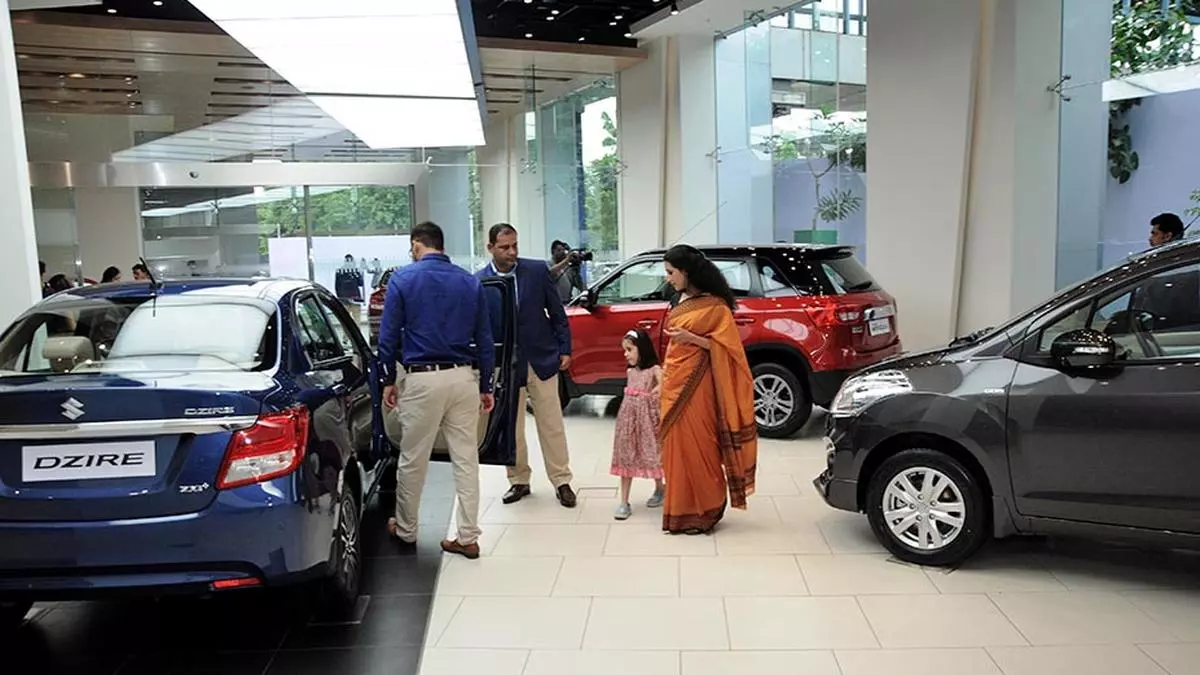Passenger vehicle (PV) makers including Maruti Suzuki India, Hyundai Motor India, Kia India, Tata Motors and Mahindra & Mahindra (M&M) have estimated market growth in the next financial year (FY 2025-26) to be in single lower digit.
In fact, the PV industry growth may decline in the next financial year as compared to the current financial year during which the growth is around four per cent year-on-year (y-o-y).
Key factors
At the 19th ‘Looking Ahead’ Conclave organised by the Society of Indian Automobile Manufacturers (SIAM) on Wednesday, the car companies discussed several reasons for estimating slower growth. These include repo rate that is still high, rupee depreciation leading to high cost of materials, young buyers working in start-ups who are classified as ‘non-income group’ to whom banks are unable to offer loans for car purchase and global factors especially developments in the US market which bode uncertainty for future growth.
Sources privy to discussions in the meeting told businessline that Maruti Suzuki India (MSIL) has projected a growth of 1-1.5 per cent next year. Tata Motors and Hyundai Motor, too, had a forecast of 1.5 per cent growth, while Kia India said it expected around three per cent growth and Mahindra & Mahindra at 5 per cent. Luxury car maker BMW Group India has projected a growth of 9 per cent in FY2025-26.
“Customer purchasing power, cost of production and understanding the need of customers are factors that fuelled auto industry growth in India. We need the bottom of the pyramid to come up and the first-time buyers to emerge,” Partho Banerjee, Senior Executive Officer – Marketing & Sales, MSIL, said.
According to sources, Banerjee highlighted in the meeting that the number of MSIL’s first-time car buyers in the overall sales has been reduced to 42 per cent currently, from 52 per cent around four years ago.
Challenges
“Indian automotive market is navigating several challenges, including various geopolitical uncertainties, which may affect the cost of raw materials, components and finished goods. The stock market volatility dampens investor confidence and consumer sentiment, potentially slowing growth,” Hardeep Singh Brar, Senior Vice-President and National Head Sales & Marketing, Kia India, told businessline.
Tapan Ghosh, Vice-President – Sales, HMIL, said mobility-as-a-service has a huge growth potential as the youth is moving from ownership to user-ship model, which could be another reason for a slow growth in the first-time buyer’s category. Also, choice for sports utility vehicles (SUVs) continues over other categories like a sedan or a hatchback, he said.
“With rapid economic growth, the aspirations of customers are increasing. The SUVs are flavour of the season. The first-time buyers are also preferring SUVs,” Ghosh added.
Rajesh Menon, Director General, SIAM, said: “The mobility landscape is undergoing a deep structural transformation towards becoming a self-reliant auto sector. Alongside supporting the industry’s sustainability initiatives, SIAM with its members is also endeavouring to boost automotive exports where much headroom is available.”
